Curious about OBD1 vs OBD2?… This guide explores their key differences and why OBD2 is essential for modern car diagnostics. Learn how both systems impact vehicle maintenance and performance.
Key Takeaways
- OBD1, introduced in the 1980s, was the first standardized vehicle diagnostic system but lacked uniformity, leading to compatibility issues among manufacturers.
- OBD2, mandated for all vehicles since 1996, provides advanced diagnostic capabilities, a standardized protocol, and greater compatibility across various car brands, enhancing vehicle performance and emissions monitoring.
- Identifying OBD systems is crucial for effective vehicle diagnostics, with OBD2 vehicles distinguished by specific manufacturing years, connector locations, and owner’s manual indications.
Overview of On-Board Diagnostics Systems
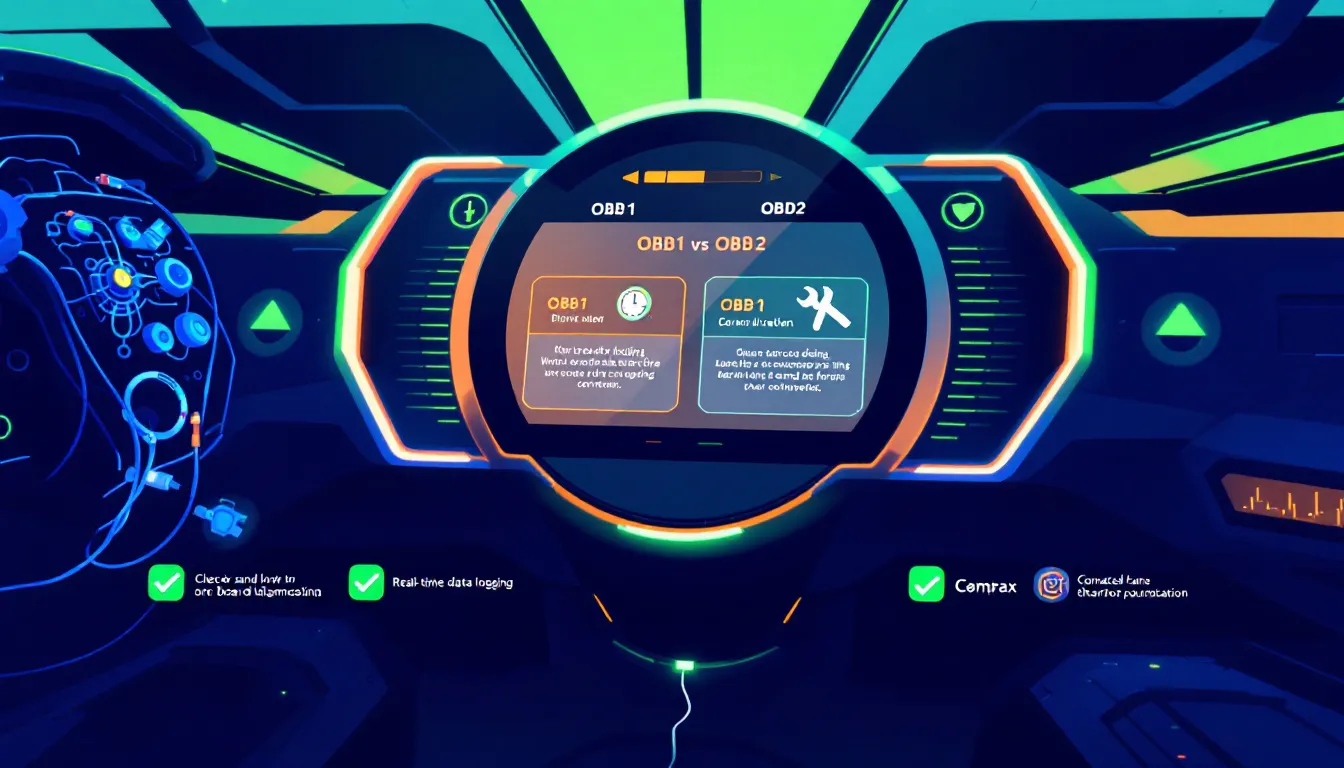
On-Board Diagnostics (OBD) systems monitor and report on a vehicle’s engine and emission control performance, ensuring optimal operation and environmental compliance. From the initial OBD1 systems to the more advanced OBD2 systems, these diagnostic tools have evolved significantly, offering quicker diagnostics and more efficient problem-solving capabilities.
OBD systems maintain vehicle performance by diagnosing and addressing issues promptly. OBD2, in particular, has gained worldwide acceptance, reflecting its comprehensive monitoring capabilities and standardization. This evolution marks a milestone in car diagnostics.
The Origin of OBD1
Introduced in the 1980s, OBD1 was a pioneering step towards standardized vehicle diagnostics. It was widely used from the early 1990s to the mid-1990s, providing a universal method for diagnosing vehicle problems.
However, one of the key limitations of OBD1 was its lack of standardization, leading to variations in diagnostic connectors and protocols among different manufacturers. Despite these limitations, OBD1 systems laid the groundwork for the advanced diagnostic capabilities of OBD2.
The Advancement to OBD2
Introduced in the early 1990s, OBD2 became a mandatory feature for all vehicles manufactured since 1996. This new generation of on-board diagnostics brought significant improvements over OBD1, offering comprehensive diagnostic capabilities that covered a wider range of vehicle systems, including engine, transmission, ABS, and airbags. The implementation of OBD2 has not only enhanced vehicle performance but also played a crucial role in monitoring and addressing emissions issues, thereby contributing to environmental protection efforts.
By employing a standardized system of diagnostic protocols and connectors, OBD2 systems are more compatible across different vehicles. Standardization ensures that technicians and vehicle owners can use a single OBD2 scanner to diagnose problems across various car brands and models, simplifying the diagnostic process and enabling quicker resolution.
The widespread adoption of OBD2 reflects its effectiveness in maintaining vehicle performance and environmental standards.
Key Differences Between OBD1 and OBD2
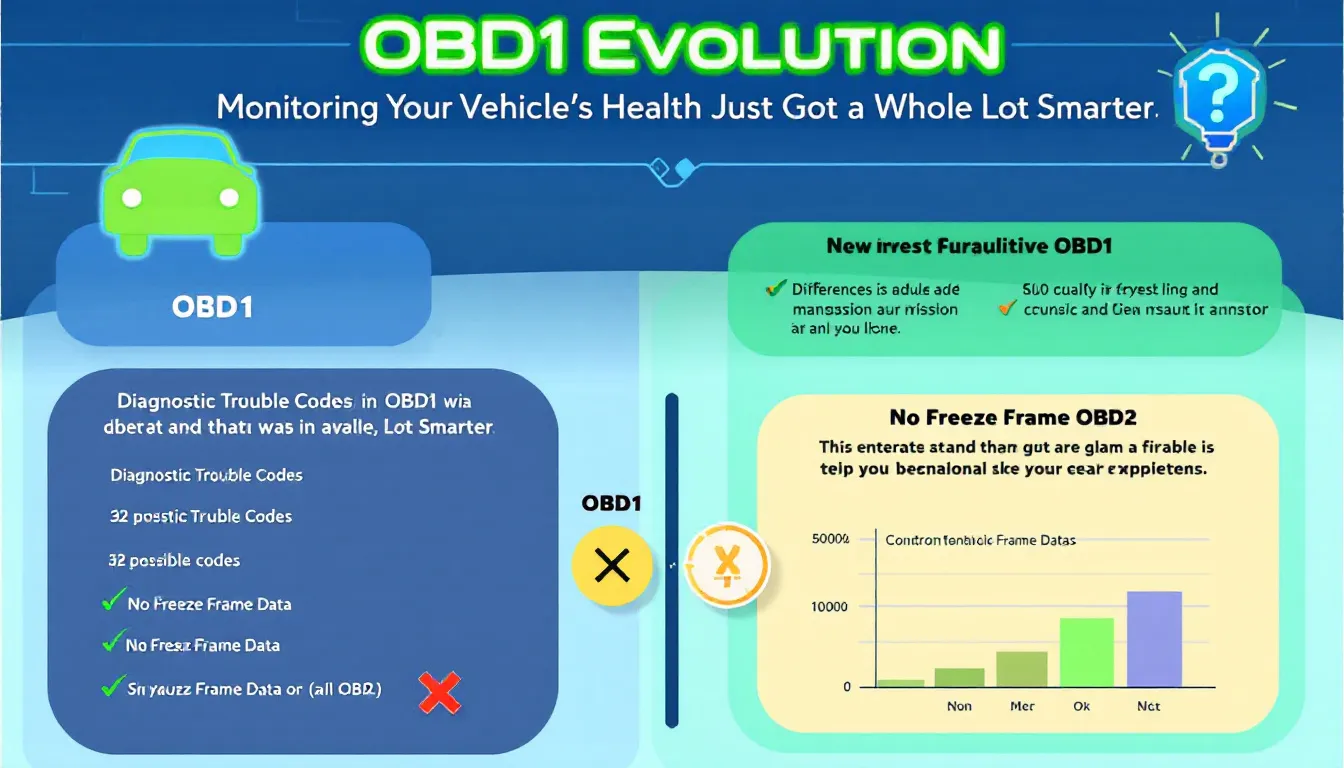
Although both OBD1 and OBD2 systems diagnose vehicle problems, they differ significantly in diagnostic capabilities, standardization, and data retrieval methods. OBD2 is more comprehensive, monitoring a wider range of vehicle systems and offering more detailed diagnostic information compared to OBD1.
Exploring these key differences will illuminate why OBD2 is a significant advancement in car diagnostics.
Standardization and Compatibility
OBD1 emerged in the early 1990s as an initial effort towards standardizing vehicle diagnostics. However, it used manufacturer-specific protocols, leading to compatibility issues across different vehicle brands and models.
In contrast, OBD2, introduced as a nationwide standard in 1996, uses standardized communication protocols such as J1850 PWM, J1850 VPW, ISO9141-2, KWP2000, and CAN, ensuring compatibility and simplifying diagnostics. The use of a standardized 16-pin diagnostic connector in OBD2 systems has significantly improved compatibility across various vehicles.
This uniformity allows the use of a single OBD2 scanner to diagnose issues across multiple car brands, making it a versatile and efficient tool.
Diagnostic Capabilities
OBD2 significantly advances diagnostic systems by accessing detailed vehicle information beyond trouble codes, offering comprehensive insights into multiple systems. Unlike OBD1, which was primarily focused on monitoring emissions, OBD2 systems provide detailed diagnostics for various components, including the engine, transmission, ABS, and airbags.
These expanded capabilities make OBD2 systems more effective in identifying and addressing a wide range of vehicle issues.
Data Retrieval and Interpretation
OBD2 provides a more coherent data presentation than OBD1, simplifying troubleshooting for technicians and vehicle owners. The ability to retrieve and interpret real-time data from multiple vehicle systems allows for more accurate diagnostics and quicker problem resolution, enhancing overall vehicle performance and maintenance.
Identifying OBD Systems in Vehicles
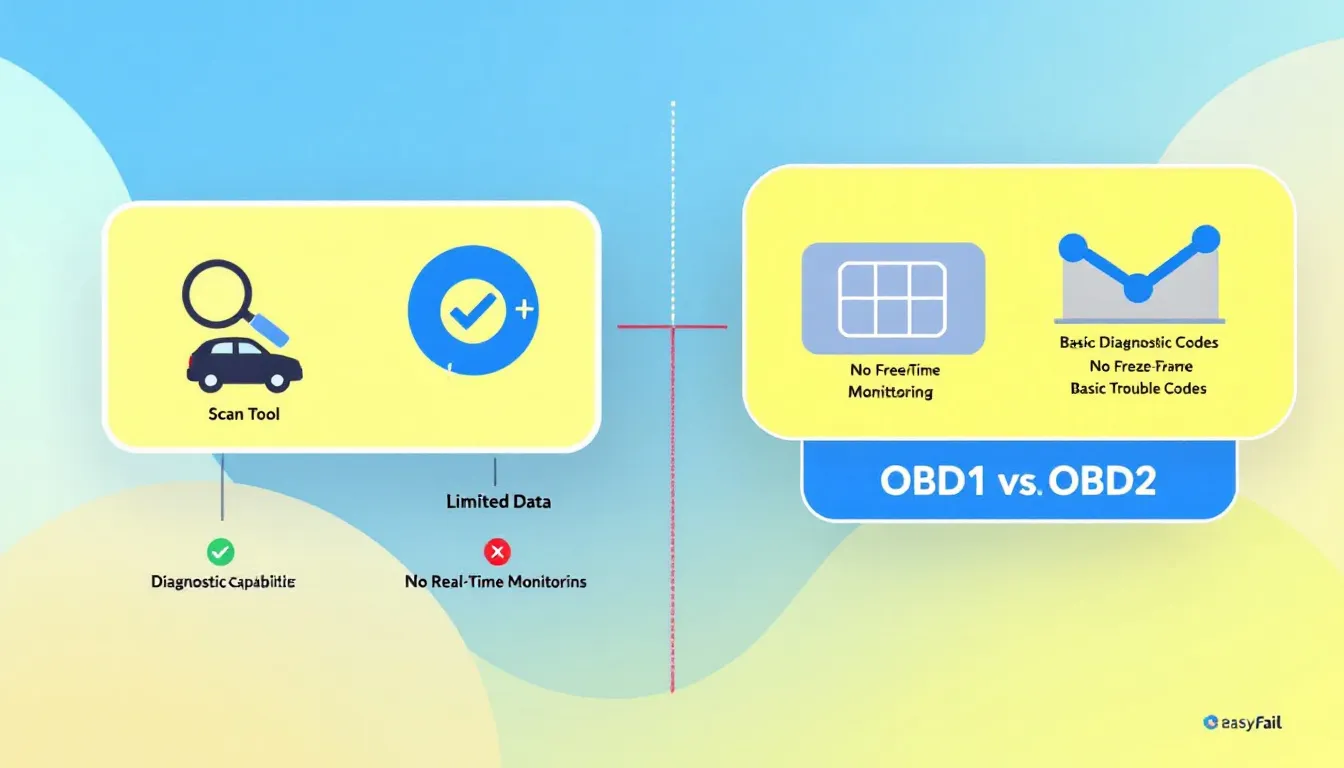
Determining whether a vehicle uses OBD1 or OBD2 is crucial for effective diagnostics and maintenance. This can be done by checking the vehicle’s manufacturing year, the location of the diagnostic connector, and consulting the owner’s manual.
Understanding these aspects aids in accurately diagnosing and addressing vehicle issues.
Manufacturing Year and Regions
Vehicles manufactured in 1996 or later are equipped with OBD2 systems, while those manufactured before 1996, with some exceptions for certain models in 1995, are likely to have OBD1 systems. Knowing the manufacturing year is critical for diagnosing vehicle issues as it indicates the type of OBD system present.
Regional regulations may also influence which OBD system a vehicle is required to have, impacting the overall diagnostics landscape.
Location of Diagnostic Connector
The location of the OBD diagnostic connector can help identify the type of OBD system in a vehicle. For OBD2 vehicles, the diagnostic connector is typically found under the dashboard or near the center console, usually on the driver’s side. In contrast, OBD1 vehicles often have the diagnostic connector located in the engine bay.
Identifying the exact location of the diagnostic connector is essential for connecting an OBD scanner and performing diagnostics.
Owner’s Manual and Labels
The owner’s manual is an effective resource to determine if a vehicle has OBD1 or OBD2. A label located under the hood can indicate the certification type of the car. It can show if the vehicle is OBD1 or OBD2 certified.
Interpreting data from an OBD scanner often requires referencing the vehicle’s service manual or online resources for accurate guidance. Such resources are invaluable for identifying the OBD system and understanding diagnostic information.
Using OBD Scanners
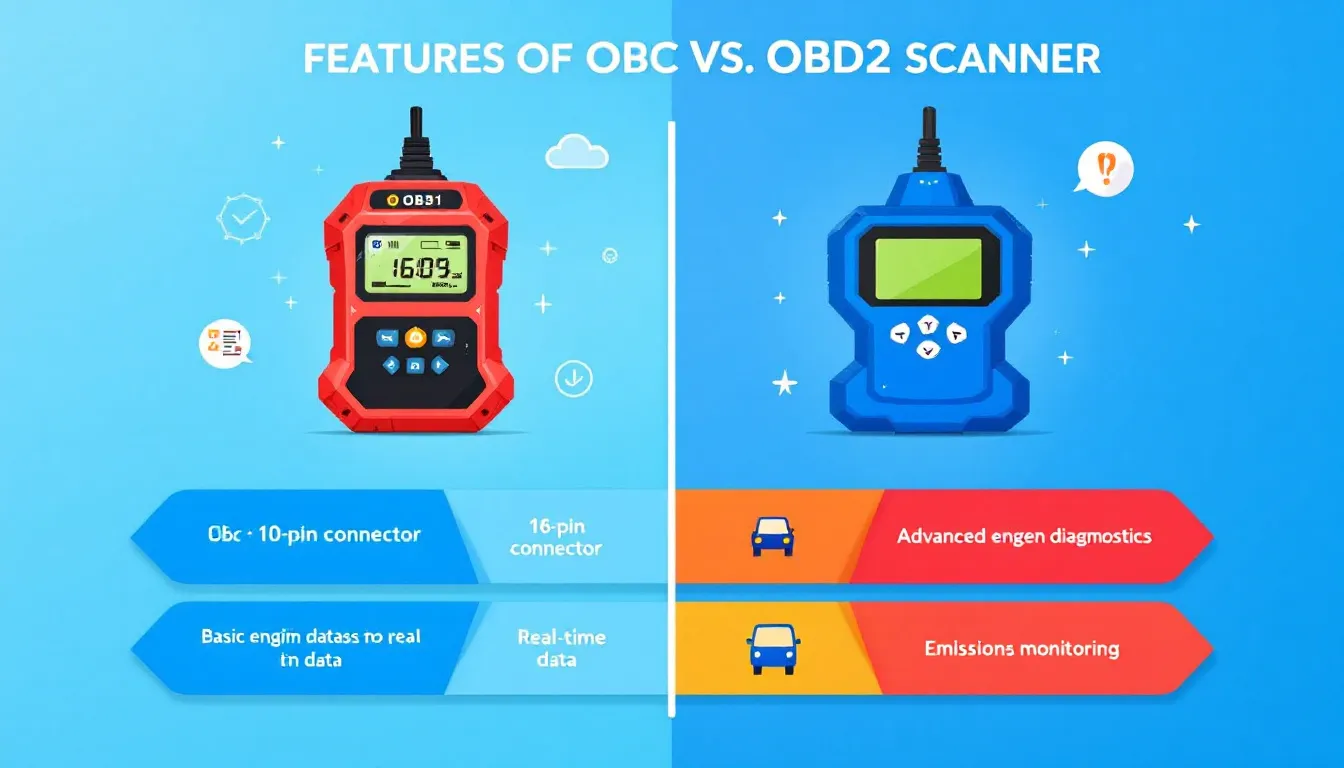
OBD scanners offer a straightforward yet powerful method to diagnose vehicle issues. They work by plugging into the vehicle’s OBD port to provide diagnostic information and identify trouble codes.
This guide will help you choose the right OBD scanner, connect it to your vehicle, and interpret the data for effective diagnostics.
Choosing the Right OBD Scanner
When selecting an OBD scanner, consider its compatibility with your vehicle’s make, model, and year to ensure accurate diagnostics. Entry-level OBD scanners typically focus on essential engine diagnostics, while advanced models offer broader functionalities.
The right scanner can significantly enhance your ability to diagnose and address vehicle issues effectively.
Connecting and Reading Data
Locate the OBD port, usually positioned under the driver’s dashboard near the steering wheel and steering column, to connect an OBD scanner. Once connected, the scanner retrieves real-time data and diagnostic trouble codes, providing insights into your vehicle’s health beyond error codes.
Some modern OBD scanners access manufacturer-specific codes for more detailed diagnostics. This allows for a more comprehensive understanding of vehicle issues and facilitates quicker diagnostics and repairs.
Advanced Features of Modern OBD Scanners
Modern OBD scanners feature live data streaming and real-time diagnostics. These features allow users to monitor critical engine parameters while the vehicle is running, offering a detailed assessment of vehicle performance. Additionally, advanced OBD scanners support functions beyond standard error codes, such as emissions testing and readiness checks.
These capabilities make modern OBD scanners invaluable tools for comprehensive vehicle diagnostics and maintenance.
Legal Requirements and Compliance
Compliance with OBD regulations ensures that vehicles meet environmental protection laws aimed at reducing emissions. OBD2 compliance helps in properly diagnosing and reporting emissions-related issues, ensuring that vehicles adhere to federal emissions standards.
Exploring the legal requirements for OBD compliance reveals how they contribute to environmental protection.
Emissions Control Standards
In the United States, vehicles manufactured in 1996 or later are generally equipped with OBD2 systems to comply with emissions control standards. The California Air Resources Board mandates OBD capabilities in all vehicles to improve engine issue detection and ensure effective emissions control.
EOBD2, required in Europe since 2014, monitors a wider range of emissions standards compared to its predecessor, EOBD. These standards help detect and report emissions problems, contributing to environmental protection efforts.
Regional Compliance
OBD compliance requirements vary significantly between regions, necessitating unique standards for each market. In the U.S., OBD-II became a requirement for all light-duty vehicles starting from 1996, with compliance standards influenced by regional regulations.
California, for instance, has the authority to implement stricter emissions regulations, affecting OBD compliance in other states as well. Understanding regional differences is crucial for ensuring that vehicles meet local environmental standards.
Tuning and Customization with OBD Systems
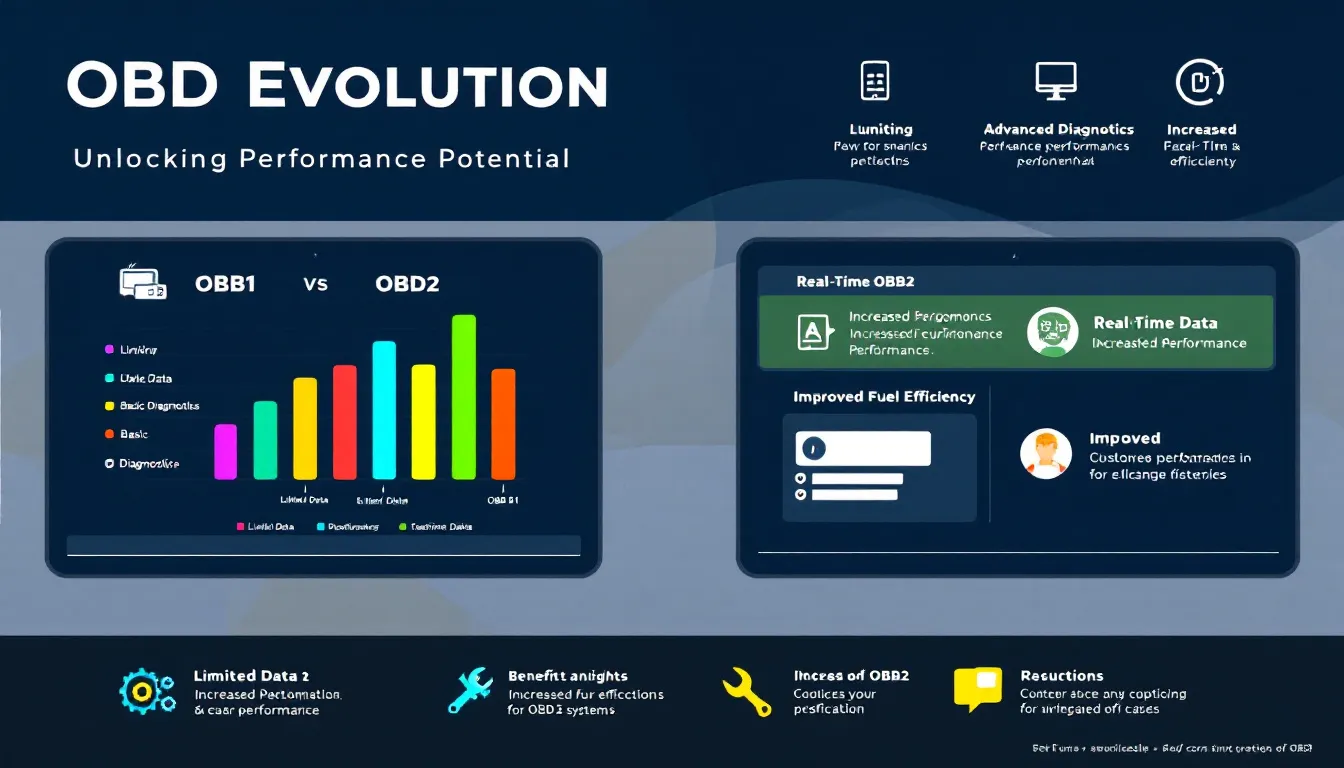
OBD systems provide exciting possibilities for tuning and customizing vehicle performance. OBD2 systems allow vehicle owners to monitor and adjust a broad array of systems, including the engine and transmission.
Exploring various tuning options and tools reveals how OBD systems can enhance vehicle performance.
Tuning Options for OBD1 and OBD2
OBD2 tuning methods, including OBD tuning, Bench tuning, and Boot mode tuning, provide versatile options for performance enhancements. While OBD1 tuning requires specific tools for Boot mode tuning, OBD2 tuning is generally easier and more versatile, making it the preferred choice for many vehicle owners.
The variety of tuning options for OBD2 systems allows comprehensive customization of vehicle performance.
Tools and Software
Various tools for OBD diagnostics play a crucial role in vehicle maintenance and tuning. High-quality tools like the KESS3 offer multiple operating modes, including OBD, Bench, and Boot, providing versatile tuning capabilities.
The Autotuner tool is designed for quick ECU data reading and is compatible with many vehicle models. Additionally, software solutions such as Carly allow users to make non-performance modifications to vehicle functions via the OBD2 interface.
These tools and software make it easier for modern vehicles owners and technicians to customize and enhance vehicle performance effectively.
Summary
Understanding the differences between OBD1 and OBD2 systems is crucial for effective car diagnostics and maintenance. OBD2 offers significant advancements in diagnostic capabilities, standardization, and data retrieval, making it a more comprehensive tool for modern vehicles. Identifying the OBD system in your vehicle, using the right OBD scanner, and understanding legal compliance are essential steps for maintaining vehicle performance and adhering to environmental standards. With the right tools and knowledge, vehicle owners and technicians can leverage OBD systems to diagnose problems quickly and efficiently, ensuring optimal vehicle performance and longevity.
Frequently Asked Questions
What is the primary purpose of OBD systems?
The primary purpose of OBD systems is to monitor and maintain vehicle performance by diagnosing and addressing issues promptly. This ensures optimal vehicle functionality and emissions control.
How can I determine if my vehicle has OBD1 or OBD2?
To determine if your vehicle has OBD1 or OBD2, check the manufacturing year; OBD2 systems were mandated in vehicles manufactured after January 1, 1996. Additionally, examine the location of the diagnostic connector, as OBD2 connectors are typically found near the driver’s side under the dashboard.
What are the key differences between OBD1 and OBD2?
The key differences between OBD1 and OBD2 are that OBD2 features standardized diagnostic protocols, provides broader diagnostic capabilities across various vehicle systems, and offers clearer data presentation than OBD1. Consequently, OBD2 is generally more effective for modern vehicle diagnostics.
What are some advanced features of modern OBD scanners?
Modern OBD scanners offer advanced features such as live data streaming, real-time diagnostics, emissions testing, and readiness checks. These capabilities enable more comprehensive vehicle analysis and maintenance planning.
How do OBD systems help in meeting environmental standards?
OBD systems are instrumental in meeting environmental standards by continuously monitoring emissions-related performance and ensuring compliance with federal emissions regulations. This proactive approach helps to identify and rectify issues that may lead to increased pollution.

